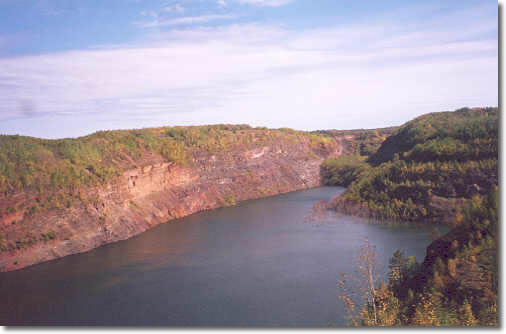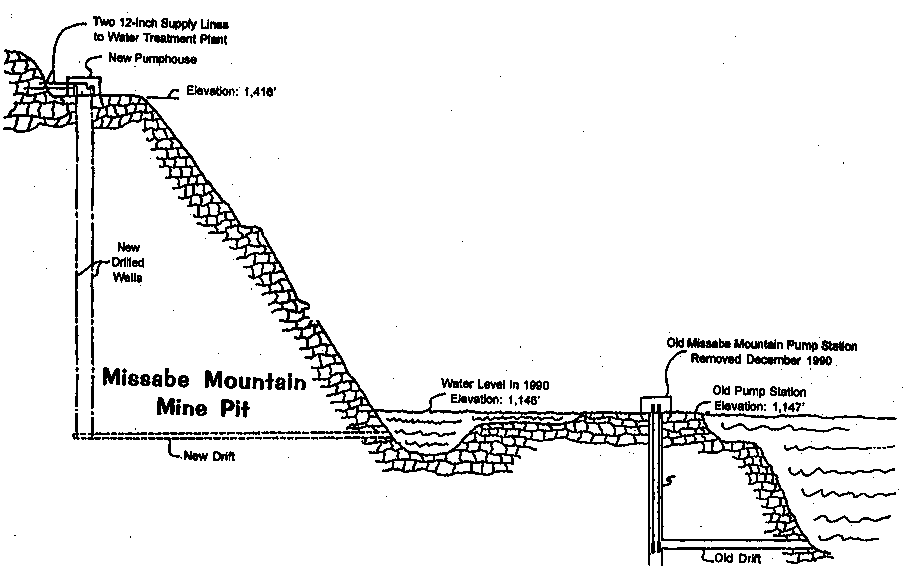Drinking Water Protection
- Drinking Water Protection Home
- About Us
- A-Z Index of Contaminants in Water
- Community Public Water Supply
- Drinking Water Grants and Loans
- Drinking Water Institute
- Drinking Water in Schools and Child Cares
- Drinking Water Revolving Fund
- Laws and Rules
- Noncommunity Public Water Supply
- Source Water Protection
- Water Operator and Certification Training
- Drinking Water Protection Contacts
Related Topics
- Annual Reports
- Drinking Water Risk Communication Toolkit
- Drinking Water Protection External Resources
- Fact Sheets
- Forms
- Invisible Heroes Videos: Minnesota's Drinking Water Providers
- Noncom Notes Newsletter
- Sample Collection Procedures (videos, pictures, written instructions)
- Waterline Newsletter
Related Sites
- 10 States Standards
- Clean Water Fund
- Health Risk Assessment – Guidance Values and Standards for Water
- Minnesota Well Index
- Water and Health
- Wells and Borings
Environmental Health Division
Virginia Gets an Upgrade
From the Winter 1999-2000 Waterline
Quarterly Newsletter of the Minnesota Department of Health Public Water Supply Unit, Waterline
A complete list of feature stories can be found on the Waterline webpage.
Although its water system, including the treatment plant, has characteristics of a groundwater system, the city of Virginia—in the heart of Minnesota’s Mesabi Iron Range—gets its supply from a surface source. Like many other Range cities, Virginia draws its water from an abandoned mine pit.
Originally, the surface-water source came from the dewatering process when the mine was in operation; in the ensuing years, as the mine stands dormant and mine pumping has stopped, the level of the water in the pit has risen significantly. Instead of a standard intake to draw the water, the city has drilled vertical wells and a horizontal shaft within the taconite bluffs to reach the water. In essence, wells are used to take the water from the surface source. “I look at it as exposed groundwater,” says Mike Appelwick, the executive vice president of Northeast Technical Services of Virginia, which operates the city’s water system on a contract basis. As for the plant, which has pressure filters, it was designed for groundwater. That’s changing now as major upgrades are underway that include the replacement of the pressure filters with gravity filters.

Virginia gets its water from the Missabe Mountain pit.
History of Virginia Water Supply
A series of wells served the community in the early part of the 20th century. When the wells started to lose productivity in the mid-1920s, the city made a connection to the Oliver Iron Mining Company’s drainage pumps in the Missabe Mountain Mine at the east end of the city. Although the mine water was intended to be used only for emergency purposes, by 1931 approximately 90 percent of the municipal water was being supplied from the Missabe Mountain pit.
The Oliver Mining Company discontinued mining in the Missabe pit in 1942, and the Virginia Department of Public Utilities (DPU) was allowed to continue using the pit pumps. Two years later, the DPU purchased the pump station from the mining company. At an elevation of 1,145 feet, the pump station was located near the edge of the lake that had developed inside the pit and over a 12 x 14 foot vertical shaft. A horizontal drift shaft, approximately 140 feet below the pump station, connected the vertical shaft to the water. The entrance to the horizontal shaft was covered by a thin overburden of unsorted iron ore, bearing rock, gravel, and clay till to filter the water before it entered the vertical shaft. The pump station housed two deep-well vertical turbine pumps. From the pump station, the raw water was then pumped up the west wall of the pit to the water treatment plant, which was approximately three-quarters of a mile away and at an elevation of 1,440 feet.
By this time, the water was being filtered, the result of a pair of horizontal pressure filters that were added to the treatment process in 1938. Hydraulic flocculators, sedimentation basins, and a filter pump building were added in 1949 and a 1-million gallon elevated reservoir constructed in 1956.
Demand for water increased during this period, bringing about a need for greater storage and filter capacity. In 1963, the DPU added a standpipe as well as four pairs of piggy-back filters (one on top of another).
By the mid-1980s, problems associated with the supply and the pit pumps started to emerge. The exposed (and uninsulated) raw-water supply lines extending up the west face of the pit were susceptible to both rock slides and extreme temperatures. To guard against freezing during the winter, the utility had to continuously pump water, resulting in an excess of water (sometimes as much as 40 percent of the total amount pumped) being routed to a storm sewer. In addition, the water level in the pit had risen more than 50 feet between 1977 and the late 1980s, threatening the existence of the pump station.
After investigating several options to deal with the problem, the utility decided to construct a new pump station on the upper perimeter of the pit rim and to drill two vertical wells and a horizontal drift shaft to connect the wells to the lake. With help from the Iron Range Resources and Rehabilitation Board (IRRRB), the city was able to complete the $940,000 project in the summer of 1989. In addition to the new pumphouse, the work included the installation of a 7 x 8 x 300 foot horizontal drift, the drilling of two 24-inch wells to intersect the drift, and the installation of two 225-horsepower, 2,000 gallon-per-minute submersible pumps.

The level of water in the Missabe Mountain Mine Pit has risen another 90 feet since the new pump station was constructed in 1990.
This solved the problems related to the source and supply, but the need for an upgrade in the treatment process continued to be an issue. The pressure filtration system in place was nearing the end of its useful life, and replacement with a similar system was not an option since the Minnesota Department of Health was no longer approving pressure systems for the treatment of surface water.
In 1994, the DPU contracted with Bonestroo Rosene Anderlik & Associates of St. Paul to perform a plant evaluation and feasibility study. From this came a recommendation to overhaul the entire treatment system and to explore the possibility of incorporating membrane filtration in the treatment process while still considering a more conventional gravity sand filtration system.
In 1998, the city pilot tested two types of membrane systems: a microfiltration system that could filter particles as small as .10 microns, which would include Giardia and Cryptosporidium but not viruses, and an ultrafiltration system that would filter particles as small as .001 microns. The membrane filtration performed well, but cost considerations caused the DPU to instead decide to go with gravity filters.
The project encompasses the removal of the existing pressure filters and high-service pumps as well as the portion of the building that housed this equipment. A new filtration building is being constructed across the street to the south of the existing building. The new building will house four sand-and-anthracite gravity filters, three high-service pumps, and a filter backwash retention tank. It will be connected by pipes to the existing plant and clearwell.
The work will also include the renovation of the existing treatment plant building and the replacement of existing piping, valves, and filter pumps as well as the installation of new chemical feed equipment and controls. The existing flocculator, sedimentation basin, and clearwell will be renovated and cleaned.

Work proceeds on a new filtration building for the water treatment plant in Virginia, Minnesota, part of a $6-million project to upgrade the city's water system.
Work began last July with the demolition of a boiler building to make way for the new filtration building, which is expected to be on-line by next July. Concrete work was completed by the end of October, in time for masons to get the structure enclosed so construction can continue through the winter. A period of interim treatment is planned after the new filtration building is completed and while the old filters are being demolished and the remaining portion of the existing plant is being renovated. The utility will be performing direct filtration during this time. Completion of the entire project is anticipated by November of 2000.
The $6-million project, which will allow the city to maintain compliance with drinking water regulations, is being funded in part by the IRRRB with the bulk of the money coming from a below-market-rate loan from the Minnesota drinking water revolving loan fund.
Go to > top.